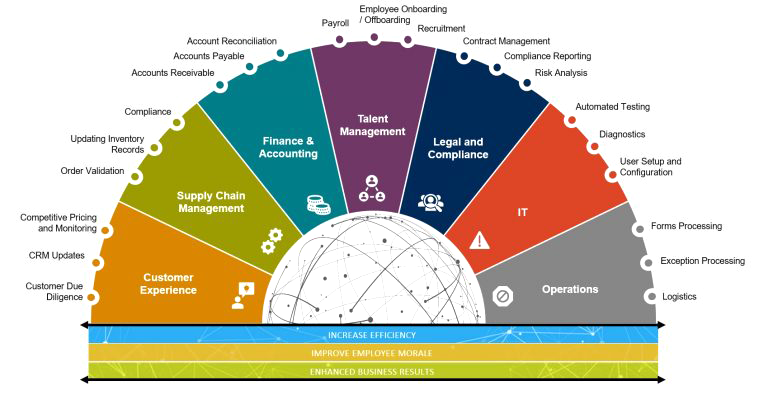
Many organizations are grappling with a downturn in revenue, layoffs, and needing to do more with less. They are strategizing how to maximize efficiency and productivity, while continuing to deliver great customer experiences. Artificial intelligence, machine learning and automation are fast emerging as strategic tools to achieve the speed, agility and efficiency needed to meet business demands.
One method of automation is robotic process automation (RPA), which enables companies to automate tasks in a workflow process by using software robots (bots) to perform those processes without human intervention. For example, RPA can automatically detect data in an email attachment, extract it from the attachment and enter it into another application (i.e., your ERP system), then decide if an escalation is needed, and if so, notify an employee.
RPA frees employees from rote, mundane and low-value tasks to focus on higher value efforts. This improves staff morale. It also speeds up how fast processes get done, reduces human errors, and enables employees to provide better customer experiences by having key data and customer information and creating a smoother, faster workflow.
Watch videos below to see the RPA Process in action:
RPA can be designed for any business workflow, but the most common use cases include:
These are typically applied across the organization in customer experience, supply chain management, finance and accounting, talent management, legal and compliance, IT and operations.

Instituting an RPA strategy requires close collaboration with IT and the departments implementing the automation. A typical path to RPA includes:
When designed well, RPA can boost efficiency and enhance the employee and customer experience, while improving an organization's speed, agility and time-to-market.
To learn more about how RPA can benefit your organization and how to develop a proof of concept and start using it, contact John Stewart or Chris Lee.


